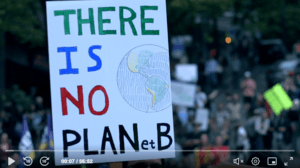Human Population Growth
"The massive growth in the human population through the 20th century has had more impact on biodiversity than any other single factor."
—Sir David King, science advisor to the UK government
The Rewilding Institute Position
on Human Population Growth
“We need to speak more from the question of how many not who. To get out of the thicket, we need to help people understand that cutting immigration is not anti-immigrant and not tied to nativism or racism, but tied directly to our ecological future.” © Dave Foreman Man Swarm, How Overpopulation is Killing the Wild World
- The core assumptions of rewilding, that most of the world ought to be wild and that modern humans have an ethical obligation to protect and restore wild nature, require that global population be stabilized and reduced as quickly as possible in a complex world.
- Biodiversity loss, climate change, pollution, deforestation, desertification, and water and food shortages are all a consequence of unsustainable human population levels and consumption.
- The current population growth trend toward an ultimate stabilization of 10 billion would render rewilding impossible and result not only in biodiversity loss but massive extinction of the species rewilders seek to sustain and restore. In view of this, the goal of global population policy should be to stabilize the world’s population and descend toward a goal of a sustainable population of 2-3 billion or less.
- We agree with Eileen Crist that addressing our ecological predicament must involve “contracting humanity’s scale and scope by means that will simultaneously strengthen human rights, facilitate the abolition of poverty, elevate our quality of life, counter the dangers of climate change, and preserve earth’s magnificent biodiversity.” (Eileen Crist, “Reimagining the Human,” Science, 14 Dec. 2018. V. 362, Issue 6420, pp. 1242-1244)
Specific measures for slowing, stopping, and reversing population growth can and must include:
- Reducing consumption
- Provision of universal access to family planning
- Limiting family size
- Educating and empowering women and girls
- Removing barriers to contraception
- Reducing poverty
These measures have been shown to often lead to the demographic transition, to low fertility, long life expectancy, and a higher quality of life.
- We recognize that human population growth rates vary around the world because of different levels of development, cultural and economic factors, and historical and demographic trends. Population policy should consider these and other factors and respect human rights and dignity at all times in pursuing population stabilization and reversal.
- We recognize that three factors determine and can change the number of people in a region or country: births, which add to the population; deaths, which subtract from the population; and migration, the net movement of people in and out. We recognize that migration has become an increasingly important factor in current demographic trends and issues. In taking a position on population policy, we must have a position on immigration.
Regarding immigration, we support policy that:
- Respects human rights and dignity at all times;
- Sets clear and enforceable limits on immigration and enforces them fairly and humanely;
- Recognizes underlying causes of immigration and pursues policies internationally that seek to address these causes and reduce motivation to migrate;
- Includes immigration policy and limitations that adhere to Article 14 of the Universal Declaration of Human Rights that “Everyone has the right to seek and enjoy in other countries asylum from persecution;”
- Recognizes that asylum must in many cases be granted to people fleeing violence and persecution, that such cases should be fairly and consistently vetted, and that asylum must be granted to seekers by all and not just from wealthy countries;
- Stands firm on the adopted immigration policy in the present environment of political partisanship, polarity, and “politically correct” pressures from within this spectrum.
Man Swarm: How Overpopulation is Killing the Wild World by Dave Foreman, with Laura Carroll.
The first edition of Man Swarm reached the conservationist community; in this new and updated edition, Dave Foreman and seasoned editor Laura Carroll expand the readership to the masses. This tight second edition: lays out how the overpopulation explosion is still with us, smartly challenges those who don't believe overpopulation is real, shows that overpopulation is solvable, takes an ecological stand on immigration and its reform in the U.S. as part of the solution, and gives tangible ways all people can be part of the solution.
Rewilding: New Opportunities to Share the Landscape
Declining populations are often presented negatively in the press and by politicians. But one of their benefits is to open up space for ecological restoration on the landscape. We discuss how fewer people has translated into more wild nature in recent “rewilding” efforts in Portugal and the U.S. Midwest.
A first look at 8 Billion Angels!
2 Ways You Can Take Action Now!
The Rewilding Institute is funded by readers and supporters around the world. Without your support, our scrappy, efficient operation would cease to be. Thank you!
Subscribe to our weekly Rewilding Earth digest!


